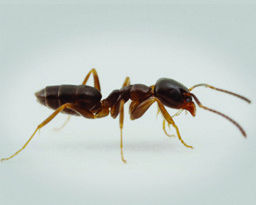Ants Come Out in Spring
Why Do Ants show up in Early Spring?

Ants become more active in spring for several reasons:
Temperature and Activity: Ants are ectothermic, meaning their body temperature depends on the external environment. During the winter, cold temperatures cause ants to slow down and become dormant. As spring arrives and temperatures rise, ants become more energetic and active again1.
Food Availability: Spring provides ants with abundant food sources. While they primarily feed on sweet substances like honeysuckle found in nature, if they discover easily accessible sugary food in your home, they’ll march in, take it, and head back outdoors to relish it2.
Shelter and Water: Ants seek shelter from the hot sun and spring rains by entering human homes. Your house, with its warmth at night and readily available food and water resources, becomes an attractive destination for these tiny explorers3.
So, when you see ants scurrying around in spring, it’s because they’re on a mission to thrive and expand their colonies!
Identifying Ant Infestations
Identifying an ant infestation involves recognizing specific signs.
Here’s what to look for:
Visible Ants: If you spot live ants crawling around your home, it’s a clear indication of an ant problem12. They are often found in kitchens or areas where food is prepared.
Ant Trails: Ants leave behind pheromone trails as they move. These trails appear as lines of ants marching in a straight path, leading to and from food sources13.
Ant Nests: Ant nests can resemble small piles of soil or dirt. Some ant species prefer nesting in walls or other quiet, dark places, making them harder to spot1.
Dirt Piles: Small piles of dirt around nest sites are indicative of an ant infestation1.
Discarded Wings: If you find discarded wings around windows and doors, it could be a sign of ants swarming and establishing new colonies3.
Unusual Sounds: Ants may invade walls and voids in your home. Carpenter ants, in particular, can be noisy when excavating4.
Musty Odor: Certain ant species, like odorous or citronella ants, emit a distinct musty scent4.
Remember, early detection allows for prompt action to control the infestation. If you suspect an ant problem, consider seeking professional pest control assistance. 🐜🔍
.